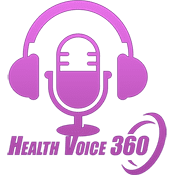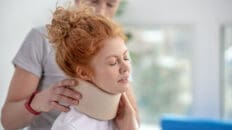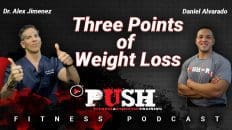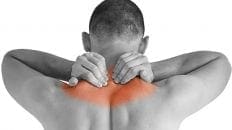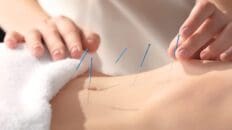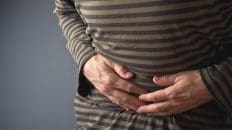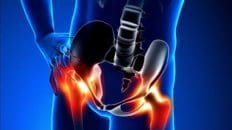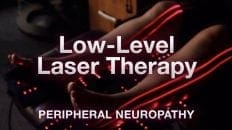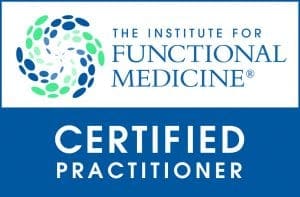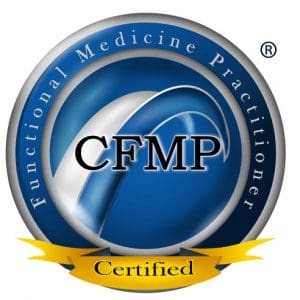Explore how chiropractic care for TBI can provide relief and improve your quality of life for those affected by tinnitus.
Table of Contents
Traumatic Brain Injury and Hearing Problems: Understanding Tinnitus, Hearing Loss, Vestibular Disorders, and More
A rapid blow to the head may cause traumatic brain injury (TBI), which damages the brain. This may occur due to falls, automobile collisions, sports injuries, or other similar incidents. Many individuals with TBI experience hearing problems, such as ringing in the ears, difficulty hearing noises, or sensitivity to loud sounds. These issues can have a significant impact on everyday life, making it difficult to concentrate or enjoy peaceful moments. Vestibular abnormalities, which cause issues with balance and dizziness, may also happen after a TBI. This page discusses TBI, including how it occurs, the symptoms it causes in hearing and balance, and strategies for managing them. We also examine tinnitus, a frequent ringing sound that may occur after a TBI, and its impact on the body. This guide uses medical research and expert comments to make these concerns easy to understand.
What Is Traumatic Brain Injury (TBI)?
When the brain is injured by an external force, it results in traumatic brain injury. A bump, blow, or jolt to the head may all constitute this force. It may also occur if the skull is punctured by anything. TBI may vary in severity from minor, such as a concussion, to severe, which might cause long-term harm or cause someone to lose consciousness. Protected by cerebrospinal fluid, the brain is housed within the skull. However, if the blow is severe, the brain may bounce against the inner walls of the skull. The brain tissues get torn, bruised, or bleed as a result. In moderate instances, symptoms may include dizziness, headaches, or disorientation. Memory loss, behavioral problems, or coma may result from severe TBI. Traumatic brain injury is prevalent. Millions of individuals worldwide encounter it annually (NeuroTucson, n.d.). It’s a major cause of disability in the United States. The causes include automobile accidents that impact persons of all ages, sports-related injuries in youth, and falls among the elderly. Explosions and fighting often cause TBI in military personnel.
Mechanisms of TBI: Primary and Secondary Injuries
It’s easier to understand TBI if you examine how the damage occurs. There are two basic kinds of damage mechanisms: primary and secondary.
The primary harm happens immediately when the collision happens. This is the harm that the force caused directly. This can occur in several ways. One kind of injury is a contact injury, which happens when something impacts the head, such a baseball bat or the ground when someone falls. This may break the skull, damage the brain, or induce bleeding beneath the skull. Another kind of injury is acceleration-deceleration. The head moves swiftly here, much way it does when someone gets whiplash in a vehicle accident. The brain moves around within the skull, which stretches and tears nerve fibers. This is known as diffuse axonal injury, which means that the brain’s wiring is damaged (Chendrasekhar, 2024; Wikipedia, 2024). When there are bursts, such as explosions, pressure waves travel through the skull and ear canals, damaging fragile tissues. This may break eardrums or sections of the inner ear immediately (NeuroTucson, n.d.; Armstrong et al., 2023).
Secondary damage occurs after the initial one and may worsen over hours or days. Inflammation causes the brain to grow, which in turn cuts off blood flow and produces ischemia, resulting in cells not receiving enough oxygen. When brain chemicals leak out, they can make cells too excited, which may lead to their death. Free radicals can cause oxidative stress, which can further damage cells. Energy failure occurs when cells are unable to produce energy, which ultimately leads to the death of additional cells (Chodobski et al., 2019; Physiopedia, n.d.; Prins et al., 2019). These processes explain the exacerbation of symptoms after the first impact. For instance, swelling puts pressure on parts of the brain that govern hearing or balance. Doctors can better detect and treat issues if they know the difference between primary and secondary injuries.
When someone has TBI, it doesn’t simply damage their ability to think or move. It might hurt your balance and hearing. The ear and brain work together to maintain body stability and process sounds. If either one is hurt, it may cause difficulties, including hearing loss, persistent ringing in the ears, or dizziness. Research indicates that individuals with TBI often report these difficulties, even when the damage is minor (Harris et al., 2024). The auditory and vestibular pathways in the brain, which provide signals for sound and balance, might be injured. This can cause symptoms that may persist for weeks, months, or even years. Understanding what TBI is can help you better comprehend why your hearing and balance fluctuate. Next, we examine how TBI directly impacts hearing.
How TBI Causes Symptoms Like Ringing in the Ears, Hearing Loss, and Noise Disturbances
Hearing-related brain or ear regions may be harmed by TBI. There are three primary components of the ear: the outer, middle, and inner ear. Noise is picked up by the outer ear. Tiny bones in the middle ear magnify them. The brain receives information from the inner ear. These bones may be broken by a head accident, which can also damage the delicate hairs in the inner ear or tear the eardrum. Sense vibrations with these hairs. Damage prevents them from sending clear signals, which results in hearing loss. Hearing loss causes sounds to seem muffled or distorted, and may also make them seem louder. One ear or both may be impacted. TBI often results in tinnitus, a condition characterized by ringing in the ears. This is the result of confusion in the brain’s hearing centers. The brain produces noises, such as buzzing or ringing, on its own when the ear doesn’t receive the right signals (Cleveland Clinic, n.d.). Research has linked TBI to an increased incidence of tinnitus, particularly among veterans (Coco et al., 2024).
Changes in the brain cause sensitivity to noise, or noise disturbances. It may be difficult for the brain to block out stimuli, making commonplace sounds too loud. We term this hyperacusis. According to Theodoroff et al. (2022), TBI may cause damage to the auditory nerve or parts of the brain that process sound. One study found that tinnitus was louder in individuals who had suffered head traumas than in those who had not (Vernon et al., 1994). Another study found that tinnitus is exacerbated by TBI, which also leads to increased headaches and lightheadedness (Folmer & Griest, 2003). These signs typically appear immediately after the injury, although they may sometimes develop later. Blast injuries exacerbate this, and they are prevalent in military contexts. Additionally, they produce pressure waves that harm the brain and hearing (Clifford et al., 2022). Tinnitus is often caused by non-blast TBIs, such as those resulting from falls (Le et al., 2024). TBIs may also result in brain edema or hemorrhage, which can obstruct hearing pathways. Signal disruption results in distorted or continuous noise. Even though the brain may adjust over time, many people still experience symptoms. These problems go beyond simple annoyance. Sleep, employment, and relationships are all impacted. Early identification aids in therapy. The impact of TBI on general hearing and cognitive skills will now be discussed.
How TBI Can Impact a Person’s Auditory and Cognitive Function
Auditory function refers to the ability to hear and comprehend sounds. TBI may make this weaker by hurting the brain or ear. For instance, sensorineural hearing loss occurs when the nerves in the inner ear are harmed. This type is widespread after TBI and is difficult to repair (NeuroTucson, n.d.). People may struggle in environments with excessive noise, such as restaurants. The brain cannot distinguish between speech and background noise. This is a problem with how the brain processes sound. Research indicates that individuals with traumatic brain injury (TBI) struggle to comprehend speech, despite normal hearing assessments (Harris et al., 2024). Thinking, remembering, and paying attention are all parts of cognitive function. TBI commonly hurts them. The scenario becomes worse when you add hearing problems to the mix. Tinnitus can be distracting, making it difficult to focus. Being sensitive to noise can make you more stressed, which in turn can lead to fatigue.
Veterans with TBI from noise or explosives may have both hearing loss and tinnitus. This has an impact on everyday activities, such as keeping up with talks (Clifford et al., 2022). Memory issues occur when the brain has to work harder to process information, which means it has less energy to recall. Anxiety and depression might come after. Constant ringing can make individuals angry and worsen their mood. Research indicates elevated depression rates among TBI patients with tinnitus (Folmer & Griest, 2003). Cognitive tests indicate that individuals have diminished cognitive processing in noisy settings. There is a distinct difference between children and adults. Age is a big factor in the likelihood of hearing loss in adults. But TBI makes this happen faster. Hearing aids and other early interventions may help improve both hearing and cognitive function. Overall, TBI is associated with issues related to hearing and cognitive function. Fixing one thing improves the other. Therapies help the brain learn how to adapt to new situations. Understanding this relationship helps you become a better person.
Personal Injury Rehabilitation- Video
Vestibular Disorders Caused by TBI
Often brought on by traumatic brain injury, vestibular disorders are issues with the inner ear’s balancing mechanism. We can detect our position in space and maintain our balance thanks to the vestibular system. The senses of the body and the eyes are involved. Injuries to this system from TBI result in imbalance, lightheadedness, and other problems.
Causes of Vestibular Disorders in TBI
TBI may damage the vestibular system in a direct or indirect manner. The primary causes are injuries to the inner ear, such as the displacement of small crystals called otoconia. This causes benign paroxysmal positional vertigo (BPPV), which is the second most prevalent vestibular problem after TBI (Wallace & Lifshitz, 2022; Vestibular Disorders Association, n.d.; Akin et al., 2021). Blasts or strikes may produce tiny holes in the ear called fistulas, which allow fluid to flow out. Secondary reasons include enlargement of the brain or injury to the brainstem or the central circuits of the cerebellum. These regions handle signals that help maintain equilibrium. Shearing pressures damage nerves, making it difficult for them to send messages (Alhilali et al., 2019; Ernst et al., 2021). Vestibular symptoms emerge rapidly in acute TBI. About 50% of those with TBI say they feel dizzy (NeuroTucson, n.d.). Chronic instances, such as those resulting from multiple concussions, accumulate damage over time.
Symptoms of Vestibular Disorders
Frequently experienced symptoms include vertigo and a spinning sensation, particularly while shifting positions. Being dizzy makes everything feel shaky. Falls and gait ataxia, or unsteady walking, are caused by balance issues (Alhilali et al., 2019). Frequently, nausea and vomiting coexist, much like motion sickness. A disorder called oscillopsia causes vision to blur as the head moves. With movement, headaches and exhaustion become worse. According to the Vestibular Illnesses Association (n.d.) and the Balance and Dizziness Center (n.d.), symptoms of BPPV may be fleeting, but those of other illnesses may be persistent. Underreporting of symptoms may occur when people believe they are only related to the head injury. But in as many as 80% of TBI patients, testing reveals problems (Marcus et al., 2022).
Impact on Auditory and Sensory Functions
Vestibular diseases not only impact balance but also intersect with auditory and sensory functions. Damage to the inner ear affects both hearing and balance since it controls both. For instance, dizziness might make tinnitus worse by adding to the tension. When the brain has trouble processing data from the eyes, hearing, and body, it is referred to as sensory overload (AAPMR, n.d.). This has a significant impact on everyday life. Poor spatial awareness makes it challenging to walk among groups. Driving or reading may exacerbate symptoms. As the brain tries to compensate for the loss, cognitive strain increases, which makes people feel more tired and less able to focus. In severe cases, it leads to anxiety about falling. It makes individuals feel alone when they can’t hear. Early vestibular treatment, including exercises designed to reposition crystals in BPPV, may be beneficial (Wallace & Lifshitz, 2022). Comprehending vestibular problems elucidates the extensive ramifications of TBI. Taking care of them helps the whole rehabilitation process.
How TBI Symptoms Like Tinnitus Can Affect a Person’s Sensory Function
Our perception of touch, sound, sight, and other senses is a part of our sensory function. This is disturbed by tinnitus from TBI. It impacts more than just hearing; it also impacts balance and pain threshold. Sound pain may be a symptom of tinnitus. This hypersensitivity alters the way someone perceives the world. Calm environments may be beneficial, whereas loud ones lead to stress (Cleveland Clinic, n.d.). Ear, neck, and head problems are common. A major cause of headaches is stress or pressure in the brain. It is common for whiplash injuries to cause neck discomfort. Ears might feel full or sore. If there is damage to the inner ear’s balancing mechanism, dizziness or vertigo results. The world is spinning due to this vestibular problem. According to studies, half of TBI patients experience dizziness (NeuroTucson, n.d.). Other symptoms include TMJ-related jaw discomfort. The pulse of tinnitus may match the heartbeat, suggesting possible problems with blood flow. Sleep deprivation from continuous noise exacerbates sensory impairment.
Eye fatigue or blurred vision are serious symptoms. Increased sensitivity to touch can make wind or clothing feel unpleasant. The impacts accumulate. High blood pressure is a result of tinnitus’s stress on the body. It causes persistent weariness over time. Sensory balance may be restored with tinnitus management. Feelings of vertigo contribute to this. Coordination becomes challenging due to the impact of imbalances on balance and perception of movement. This exacerbates hearing problems, such as difficulty identifying sounds.
A TBI Symptom Questionnaire Example:
What Is Tinnitus? Its Causes and Symptoms Correlating with TBI
Tinnitus is the sensation of hearing noises that don’t come from outside. It’s like sounds that aren’t there, like ringing, buzzing, clicking, or roaring. It may happen all the time or only occasionally (Cleveland Clinic, n.d.). Hearing loss from aging or exposure to loud noises might cause this. But TBI is a serious deal. Head trauma hurts the brain or the nerves in the ear. This sends the wrong signals, which causes tinnitus. The symptoms are different. Some people hear high-pitched rings, while others hear low-pitched hums. It might go in one ear after an accident. Stress or stillness may make things louder. Tinnitus generally occurs immediately after TBI. In situations of brain damage, it is louder and more irritating (Vernon et al., 1994). Veterans with TBI report significant disability (Coco et al., 2024). Other factors that may cause it include earwax, infections, or certain medications. But TBI’s direct impact sets it apart. Some of the signs include difficulty sleeping, irritability, and trouble concentrating. The situation worsens if it is not treated. However, treatments like soundproofing may help mitigate the issue. Tinnitus and vestibular problems may both happen after a traumatic brain injury (TBI) since they both come from damage to the inner ear.
Clinical Observations from Dr. Alexander Jimenez
Insights on TBI and associated problems are provided by Dr. Alexander Jimenez, a chiropractor and nurse practitioner in El Paso, Texas. He has been treating injuries from vehicle collisions, sports, work, and personal incidents for more than 30 years (Jimenez, n.d.a; Jimenez, n.d.b). His practice employs a dual-scope approach, combining medical and chiropractic perspectives. This includes checking the general health as well as the bones. He investigates obscure symptoms of TBI, such as headaches, balance issues, or lightheadedness, that are linked to vestibular diseases. To detect neuromusculoskeletal impairment, treatment involves sophisticated imaging. This helps detect problems with the brain, nerves, or inner ear. Specific exercises are performed as part of procedures to restore balance, strength, and flexibility. One typical TBI symptom that massage treatment helps with is stress in the head and neck. Acupuncture aids in healing and pain reduction. Not only are symptoms addressed by these integrative approaches, but also the causes.
The clinic handles medical treatment and legal documentation for auto accidents. This ensures that patients receive comprehensive assistance from diagnosis to rehabilitation. Dr. Jimenez promotes the use of natural remedies. By addressing imbalances such as inflammation or poor posture, he prevents chronic issues. His method enhances health by promoting physical activity and a balanced diet. This is particularly helpful for patients who experience vestibular problems or tinnitus following a TBI. Better neck alignment and relief from ear pressure may result from chiropractic adjustments, which might enhance balance. In general, his work illustrates the advantages of integrated care.
Treatment Options for TBI-Related Hearing and Vestibular Issues
The first step in treating TBI-related hearing and balance problems is to determine their specific nature. Audiologists check your hearing and balance. White noise is used in sound therapy for tinnitus to help distract your mind from it. Hearing aids help people who have lost their hearing. Cochlear implants can restore sound in severe cases. Vestibular rehabilitation therapy (VRT) teaches individuals with vestibular disorders how to perform exercises that enhance their balance. Canalith repositioning maneuvers move crystals that have come loose in BPPV (Vestibular Disorders Association, n.d.). Dr. Jimenez’s use of integrative medicine is helpful. Exercise makes the body stronger. Massage helps alleviate stress that exacerbates symptoms. Medicines can help with nausea or dizziness, but many people prefer natural options for long-term use. Avoiding things that trigger flare-ups, such as loud noises or sudden movements, can help. Therapy for cognitive problems is also helpful. Counseling helps with anxiety that comes from noise or being out of balance. It takes time to get better. Early care leads to better results.
Conclusion
Tinnitus, hearing loss, noise sensitivity, and vestibular problems, including vertigo and dizziness, may result from traumatic brain injury, which can transform normal noises and movements into significant obstacles. We may better comprehend the causes of TBI symptoms and how they impair auditory, cognitive, and sensory processes by understanding the primary and secondary mechanisms underlying the condition, from immediate consequences such as nerve damage to delayed effects like swelling. As a continual reminder of the brain’s susceptibility, tinnitus stands out in particular, often exacerbating other issues with the head, neck, and ears. Early detection and all-encompassing treatment, however, provide hope. Chiropractic adjustments, targeted exercises, massage, and acupuncture are just a few of the integrative methods that experts like Dr. Alexander Jimenez demonstrate may help treat underlying issues, encourage natural healing, and reduce the risk of long-term consequences. Don’t disregard these symptoms, whether they are caused by a fall, auto accident, or sports injury; getting expert assistance as soon as possible will help you regain your balance, reduce noise, and enhance your quality of life. Stay cautious, stay educated, and never forget that with the correct help, recovery is achievable.
References
- AAPMR. (n.d.). Vestibular dysfunction (after brain injury). https://now.aapmr.org/vestibular-dysfunction-after-brain-injury/
- Akin, F. W., et al. (2021). Understanding and managing trauma-induced vestibular deficits. Journal of International Advanced Otology, 17(6), 559-565. https://pmc.ncbi.nlm.nih.gov/articles/PMC8975387/
- Alhilali, L. M., et al. (2019). Vestibular dysfunction in acute traumatic brain injury. Journal of Neurology, 266(10), 2430-2433. https://pmc.ncbi.nlm.nih.gov/articles/PMC6765474/
- Armstrong, M. J., et al. (2023). Traumatic brain injury: Mechanisms, manifestations, and visual sequelae. Frontiers in Neurology, 14, 1290665. https://pmc.ncbi.nlm.nih.gov/articles/PMC9995859/
- Balance and Dizziness Center. (n.d.). Dizziness and imbalance after mild traumatic brain injury (mTBI). https://balanceanddizziness.org/disorders/vestibular-disorders/dizziness-imbalance-after-mtbi/
- Chendrasekhar, A. (2024). Classification and complications of traumatic brain injury. Medscape. https://emedicine.medscape.com/article/326643-overview
- Chodobski, A., et al. (2019). A review of the molecular mechanisms of traumatic brain injury. World Neurosurgery, 131, 126-132. https://www.sciencedirect.com/science/article/pii/S187887501931945X
- Cleveland Clinic. (n.d.). Tinnitus. https://my.clevelandclinic.org/health/symptoms/14164-tinnitus
- Clifford, R. E., et al. (2022). The interrelationship of tinnitus and hearing loss secondary to age, noise exposure, and traumatic brain injury. American Journal of Audiology, 31(4), 1114-1124. https://pubmed.ncbi.nlm.nih.gov/35612496/
- Coco, L., et al. (2024). Associations between traumatic brain injury and severity of tinnitus-related functional impairment among US military veterans: A national, population-based study. Journal of Head Trauma Rehabilitation, 39(3), 218-230. https://pubmed.ncbi.nlm.nih.gov/38709830/
- Ernst, A., et al. (2021). Post-traumatic peripheral vestibular disorders (excluding positional vertigo) in workers following head trauma. Scientific Reports, 11(1), 23429. https://www.nature.com/articles/s41598-021-02987-5
- Folmer, R. L., & Griest, S. E. (2003). Chronic tinnitus resulting from head or neck injuries. The Laryngoscope, 113(5), 821-827. https://pubmed.ncbi.nlm.nih.gov/12792317/
- Harris, M., et al. (2024). Mild traumatic brain injury and the auditory system: An overview of the mechanisms, clinical presentations, and current diagnostic modalities. Journal of Neurotrauma, 41(13-14), 1524-1532. https://pubmed.ncbi.nlm.nih.gov/37742111/
- Jimenez, A. (n.d.a). El Paso, TX, doctor of chiropractic. https://dralexjimenez.com/
- Jimenez, A. (n.d.b). Dr. Alexander Jimenez, DC, APRN, FNP-BC, IFMCP, CFMP, ATN ?. LinkedIn. https://www.linkedin.com/in/dralexjimenez/
- Le, M., et al. (2024). Prevalence of tinnitus following non-blast-related traumatic brain injury: A systematic review of literature. Brain Injury, 38(11), 859-868. https://pubmed.ncbi.nlm.nih.gov/38775672/
- Marcus, H. J., et al. (2022). Patterns of vestibular dysfunction in chronic traumatic brain injury. Frontiers in Neurology, 13, 942349. https://www.frontiersin.org/journals/neurology/articles/10.3389/fneur.2022.942349/full
- NeuroTucson. (n.d.). Traumatic brain injury and the ear. https://neurotucson.com/traumatic-brain-injury-and-the-ear/
- Physiopedia. (n.d.). Pathophysiology of traumatic brain injury. https://www.physio-pedia.com/Pathophysiology_of_Traumatic_Brain_Injury
- Prins, M., et al. (2019). Traumatic brain injuries: Pathophysiology and potential therapeutic targets. Frontiers in Cellular Neuroscience, 13, 528. https://www.frontiersin.org/journals/cellular-neuroscience/articles/10.3389/fncel.2019.00528/full
- Theodoroff, S. M., et al. (2022). Concussion management guidelines neglect auditory symptoms. Journal of Speech, Language, and Hearing Research, 65(3), 653-658. https://pubmed.ncbi.nlm.nih.gov/32941367/
- Vernon, J. A., et al. (1994). Characteristics of tinnitus induced by head injury. Archives of Otolaryngology–Head & Neck Surgery, 120(5), 547-551. https://pubmed.ncbi.nlm.nih.gov/8172707/
- Vestibular Disorders Association. (n.d.). Traumatic brain injury. https://vestibular.org/article/diagnosis-treatment/types-of-vestibular-disorders/tbi/
- Wallace, B., & Lifshitz, J. (2022). Traumatic brain injury and vestibular pathology as a comorbidity after blast exposure. Physical Therapy, 99(11), 1464-1476. https://pubmed.ncbi.nlm.nih.gov/19628578/
- Wikipedia. (2024). Traumatic brain injury. https://en.wikipedia.org/wiki/Traumatic_brain_injury
General Disclaimer
Professional Scope of Practice *
The information herein on "Chiropractic Care: A Guide to Reduce Tinnitus from TBI" is not intended to replace a one-on-one relationship with a qualified health care professional or licensed physician and is not medical advice. We encourage you to make healthcare decisions based on your research and partnership with a qualified healthcare professional.
Blog Information & Scope Discussions
Welcome to El Paso's Premier Wellness and Injury Care Clinic & Wellness Blog, where Dr. Alex Jimenez, DC, FNP-C, a Multi-State board-certified Family Practice Nurse Practitioner (FNP-BC) and Chiropractor (DC), presents insights on how our multidisciplinary team is dedicated to holistic healing and personalized care. Our practice aligns with evidence-based treatment protocols inspired by integrative medicine principles, similar to those found on this site and our family practice-based chiromed.com site, focusing on restoring health naturally for patients of all ages.
Our areas of multidisciplinary practice include Wellness & Nutrition, Chronic Pain, Personal Injury, Auto Accident Care, Work Injuries, Back Injury, Low Back Pain, Neck Pain, Migraine Headaches, Sports Injuries, Severe Sciatica, Scoliosis, Complex Herniated Discs, Fibromyalgia, Chronic Pain, Complex Injuries, Stress Management, Functional Medicine Treatments, and in-scope care protocols.
Our information scope is multidisciplinary, focusing on musculoskeletal and physical medicine, wellness, contributing etiological viscerosomatic disturbances within clinical presentations, associated somato-visceral reflex clinical dynamics, subluxation complexes, sensitive health issues, and functional medicine articles, topics, and discussions.
We provide and present clinical collaboration with specialists from various disciplines. Each specialist is governed by their professional scope of practice and their jurisdiction of licensure. We use functional health & wellness protocols to treat and support care for musculoskeletal injuries or disorders.
Our videos, posts, topics, and insights address clinical matters and issues that are directly or indirectly related to our clinical scope of practice.
Our office has made a reasonable effort to provide supportive citations and has identified relevant research studies that support our posts. We provide copies of supporting research studies upon request to regulatory boards and the public.
We understand that we cover matters that require an additional explanation of how they may assist in a particular care plan or treatment protocol; therefore, to discuss the subject matter above further, please feel free to ask Dr. Alex Jimenez, DC, APRN, FNP-BC, or contact us at 915-850-0900.
We are here to help you and your family.
Blessings
Dr. Alex Jimenez DC, MSACP, APRN, FNP-BC*, CCST, IFMCP, CFMP, ATN
email: coach@elpasofunctionalmedicine.com
Multidisciplinary Licensing & Board Certifications:
Licensed as a Doctor of Chiropractic (DC) in Texas & New Mexico*
Texas DC License #: TX5807, Verified: TX5807
New Mexico DC License #: NM-DC2182, Verified: NM-DC2182
Multi-State Advanced Practice Registered Nurse (APRN*) in Texas & Multistate
Multistate Compact RN License by Endorsement (42 States)
Texas APRN License #: 1191402, Verified: 1191402 *
Florida APRN License #: 11043890, Verified: APRN11043890 *
* Prescriptive Authority Authorized
ANCC FNP-BC: Board Certified Nurse Practitioner*
Compact Status: Multi-State License: Authorized to Practice in 40 States*
Graduate with Honors: ICHS: MSN-FNP (Family Nurse Practitioner Program)
Degree Granted. Master's in Family Practice MSN Diploma (Cum Laude)
Dr. Alex Jimenez, DC, APRN, FNP-BC*, CFMP, IFMCP, ATN, CCST
My Digital Business Card
RN: Registered Nurse
APRNP: Advanced Practice Registered Nurse
FNP: Family Practice Specialization
DC: Doctor of Chiropractic
CFMP: Certified Functional Medicine Provider
MSN-FNP: Master of Science in Family Practice Medicine
MSACP: Master of Science in Advanced Clinical Practice
IFMCP: Institute of Functional Medicine
CCST: Certified Chiropractic Spinal Trauma
ATN: Advanced Translational Neutrogenomics
